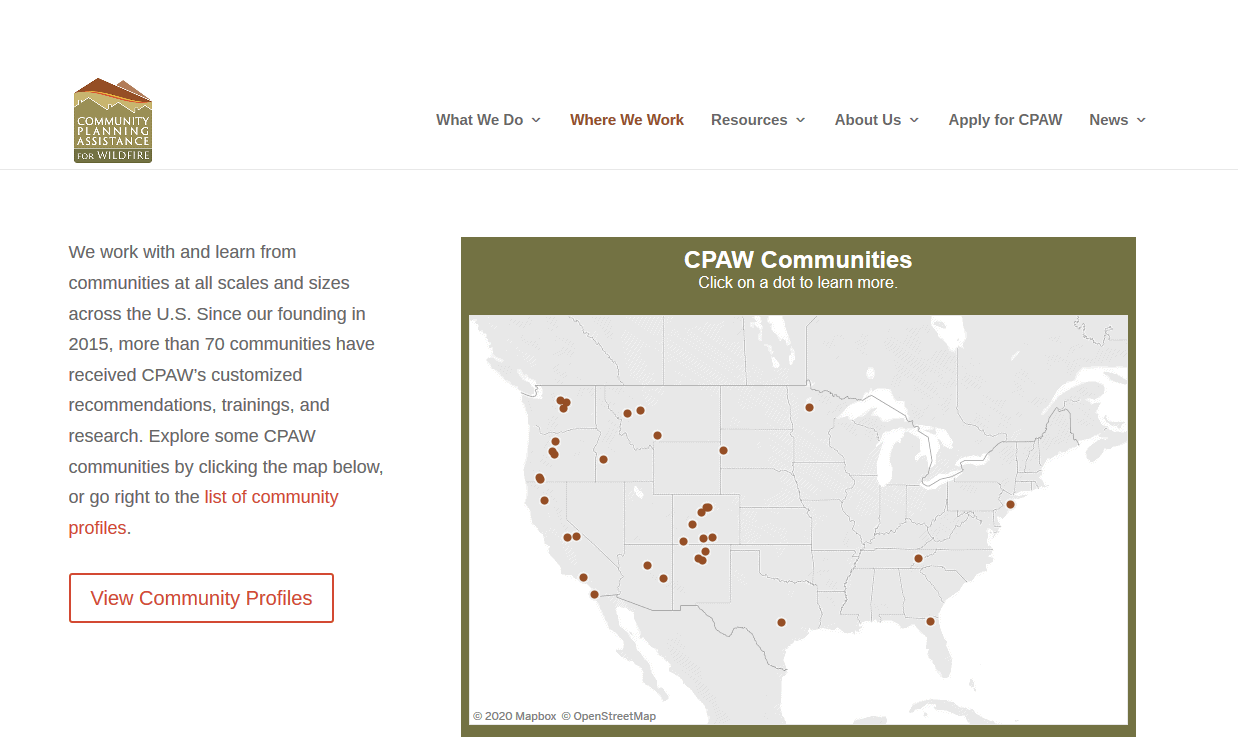 We’ve had some discussions about “what communities in fire-prone areas need to do.” Throughout the West (not to speak of the rest of the country, which also has fires) there are a variety of efforts ongoing to help communities plan for fires.
We’ve had some discussions about “what communities in fire-prone areas need to do.” Throughout the West (not to speak of the rest of the country, which also has fires) there are a variety of efforts ongoing to help communities plan for fires.
I’ll point out two things here. First, one of my early post-retirement volunteer gigs was being a member of the El Paso County Planning Commission. So I understand that because planners think something, it doesn’t necessarily get done. Elected officials and voters make the calls ultimately.
Second, there is a substantial body of literature on the topic of “what communities are doing” and “people’s behavior around wildfire mitigation.” I don’t know of a place where it has recently been rounded up but please put links to studies you know of in the comments below. To have an in-depth conversation around the topic of what communities need to do, we have to know what they are doing (of course, there are thousands, so it’s hard to generalize) and what the research tells us about the problems.
Of course, there are CWPPs via the Community Wildfire Protection Planning process. Please add links to other wildfire planning efforts.
Then there is also CPAW or Community Planning Assistance for Wildfire, a joint effort by Headwaters Economics and the Forest Service. The map of communities they’ve helped is above.
Working with communities across the country, Community Planning Assistance for Wildfire (CPAW) provides communities with land use planning solutions to better manage their wildland-urban interface (WUI). Established in 2015 by Headwaters Economics and Wildfire Planning International, CPAW is funded by the U.S. Forest Service and private foundations. The CPAW team includes planners, foresters, economists, researchers, and wildfire hazard modelers. All services and recommendations come at no cost to the community.
We work with and learn from communities at all scales and sizes across the U.S. Since our founding in 2015, more than 70 communities have received CPAW’s customized recommendations, trainings, and research. Explore some CPAW communities by clicking the map below, or go right to the list of community profiles.
The other thing I wanted to point out is that the American Planning Association, the professional society for county and urban planners, also has a variety of helpful information about what planners are doing. It’s interesting that their book Planning For Wildfire was published in 2005. Clearly they have been thinking about this for awhile.
Just like foresters, accountants, ecologists, wildlife bios and so on, planners have their professional society meetings where they learn and exchange best practices. In Colorado, planners have had many sessions on this topic.

I’m sure other states have chapters with wildland fire planning topics as well.
Related to this post are the actions that homeowners can, and must, take to fireproof their homes.
Is anyone else disturbed that almost every summer when there are news reports about fires there’s mention of fire crews having to clear brush around houses? That work is NOT the responsibility of federal or state tax payers or whoever is footing the bill for suppression! Assigning crews to do fireproofing around structures takes them away from other fire suppression work they could be doing. That is especially critical at a time like this when the available resources are stretched to the limit by a large number of big fires!
Homeowners must step up and take responsibility for reducing the risk to their homes! Local communities, fire departments, insurance companies and others must find ways to ensure that every homeowner, in fire-prone areas, does the necessary fireproofing!
Thanks, OW. Do you know of any communities who have effectively done this? I know in parts of Colorado insurance folks check for fire-proofing but I don’t know how often.
That is also something that could be more targeted to real rural residential and not houses in the middle of town.